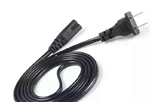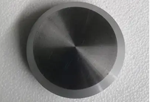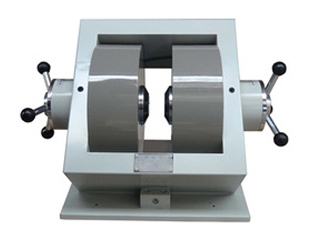
Search For Your Exact Product Here
Choose The One That Suits Your Needs Magnetic Field Coils
-
 Learn More
Learn MoreSquare Helmholtz Coil
Product Descriptions
The Square Helmholtz coil features a large homogeneity volume and a wide magnetic field working gap. The square coil is generally used for testing the large-sized sample, and the side length of the coil can reach 1 meter or even several meters, and it can be designed as the single-axis, two-axis or three-axis coil. The square coil is applied for Standard Magnetic Field Generation, Offset and Compensation of the Earth's Magnetic Field, Geomagnetic Environment Simulation, Judgment of Magnetic Shielding Effect, Electromagnetic Interference Simulation Experiments, Calibration of Hall Sensors and Magnetometers, Biological Magnetic Field Studies and Material Magnetic Characterization studies. Our Square Helmholtz Coil can be customer-designed and customer-made according to the user’s individual parameter requirements.
Magnetic Field Coils Product Accessories
-

Closed Loop Control System
WD type closed-loop control system
-

Power Line
WD type electromagnetic power cord
-

Probe Holder
WD type electromagnetic probe holder
-

Pure Iron Tip
WD type electromagnet pure iron pole head
-

High precision electric control turntable
WD type high-precision electromagnetic control turntable
-

Manual Turntable
WD type manual turntable
The field air gap is adjustable in both directions, with a single yoke structure and a horizontal magnetic field direction; Standing upright and having a wide operating space, it is convenient for taking and placing samples and combining with other equipment, making it one of the most common electromagnetic magnets in magnetic research. Used for Hall effect research and magnetoresistance effect research.
The field air gap is adjustable in both directions, with a single yoke structure and a horizontal magnetic field direction; Standing upright and having a wide operating space, it is convenient for taking and placing samples and combining with other equipment, making it one of the most common electromagnetic magnets in magnetic research. Used for Hall effect research and magnetoresistance effect research.
The field air gap is adjustable in both directions, with a single yoke structure and a horizontal magnetic field direction; Standing upright and having a wide operating space, it is convenient for taking and placing samples and combining with other equipment, making it one of the most common electromagnetic magnets in magnetic research. Used for Hall effect research and magnetoresistance effect research.
The field air gap is adjustable in both directions, with a single yoke structure and a horizontal magnetic field direction; Standing upright and having a wide operating space, it is convenient for taking and placing samples and combining with other equipment, making it one of the most common electromagnetic magnets in magnetic research. Used for Hall effect research and magnetoresistance effect research.
The field air gap is adjustable in both directions, with a single yoke structure and a horizontal magnetic field direction; Standing upright and having a wide operating space, it is convenient for taking and placing samples and combining with other equipment, making it one of the most common electromagnetic magnets in magnetic research. Used for Hall effect research and magnetoresistance effect research.
The field air gap is adjustable in both directions, with a single yoke structure and a horizontal magnetic field direction; Standing upright and having a wide operating space, it is convenient for taking and placing samples and combining with other equipment, making it one of the most common electromagnetic magnets in magnetic research. Used for Hall effect research and magnetoresistance effect research.
The field air gap is adjustable in both directions, with a single yoke structure and a horizontal magnetic field direction; Standing upright and having a wide operating space, it is convenient for taking and placing samples and combining with other equipment, making it one of the most common electromagnetic magnets in magnetic research. Used for Hall effect research and magnetoresistance effect research.
The field air gap is adjustable in both directions, with a single yoke structure and a horizontal magnetic field direction; Standing upright and having a wide operating space, it is convenient for taking and placing samples and combining with other equipment, making it one of the most common electromagnetic magnets in magnetic research. Used for Hall effect research and magnetoresistance effect research.
The field air gap is adjustable in both directions, with a single yoke structure and a horizontal magnetic field direction; Standing upright and having a wide operating space, it is convenient for taking and placing samples and combining with other equipment, making it one of the most common electromagnetic magnets in magnetic research. Used for Hall effect research and magnetoresistance effect research.








